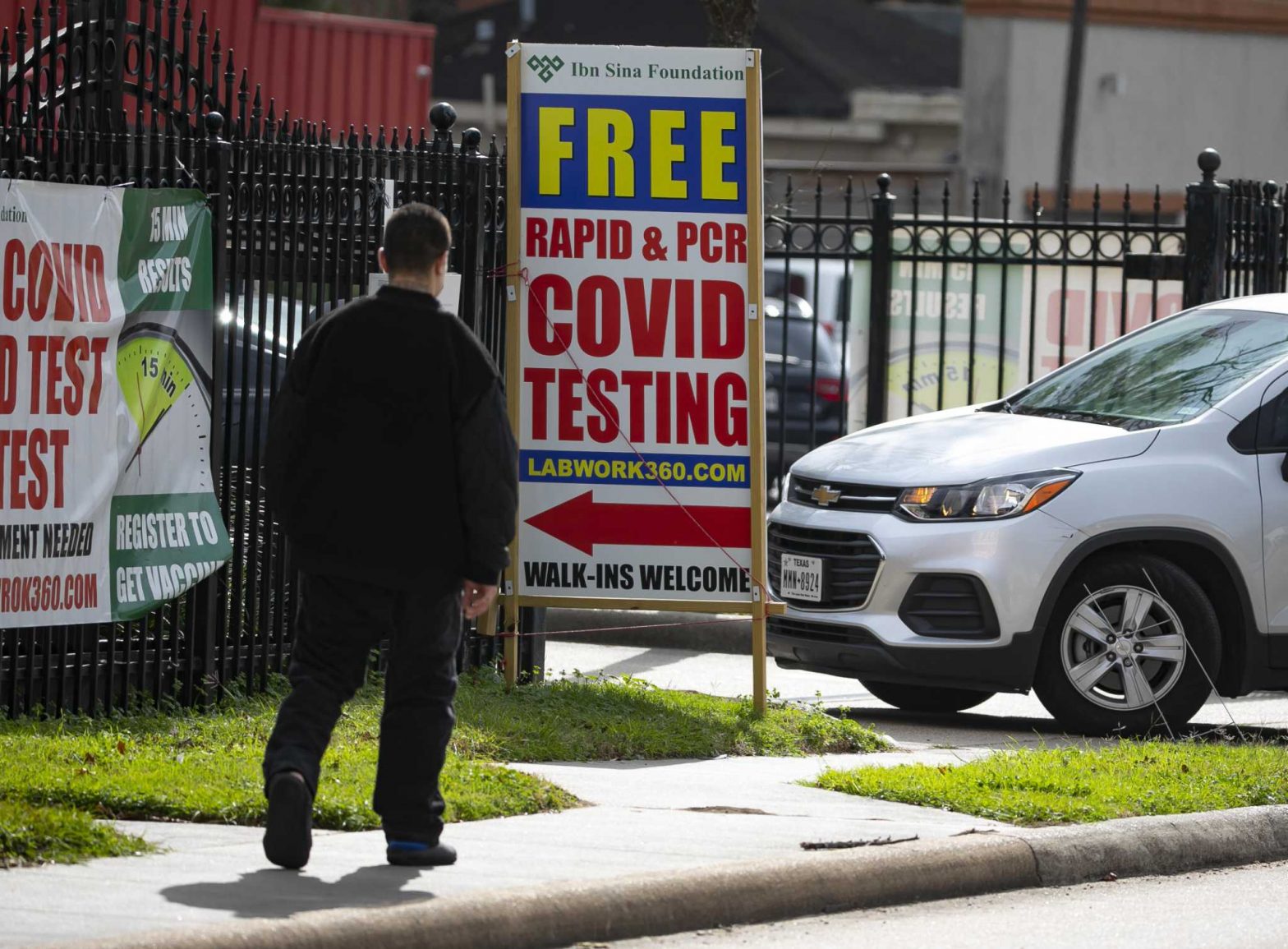The Texas Medical Center is experiencing its highest-ever demand for COVID tests during the pandemic, driven by the sudden rise of the omicron variant that has shocked the U.S. testing system.
Medical center hospitals administered an average of 4,412 tests per day as of Monday, said Dr. James McDeavitt, senior vice president and dean of clinical affairs at Baylor College of Medicine — 10 percent higher than the previous peak of about 4,000 tests per day in January.
Droves of Houston-area residents are forming long lines outside local testing sites in the hunt for 24-hour PCR tests. Appointment slots are filling up at clinics, and at-home rapid tests are disappearing from local pharmacy shelves. CVS Pharmacy limited at-home test kit purchases to six per person, while Walgreen’s limited purchases to four.
“We need to acknowledge how fragile our testing system still is after two years, where a new rush is collapsing everything again,” said Dr. Luis Ostrosky, infectious disease expert at UTHealth Houston and medical director of epidemiology at Memorial Hermann-Texas Medical Center.
Jared Woodman, 23, has noticed the long lines at pop-up testing sites around Houston in recent days. He tried to avoid them on Tuesday by seeking out a test at an area clinic that accepted his insurance. He scheduled an appointment at 12:45, but they didn’t call his name until around 3 p.m., he said.
He even sneaked over to various Walgreen’s and CVS stores while waiting — all booked.
“I was so frustrated … it’s just so dense here, so packed,” he said. “Everyone wants to get a test, and it’s nearly impossible to find one.”
The Houston Health Department is partnering with Curative to open a new testing mega-site Wednesday at Delmar Stadium, to operate daily from 8 a.m. to 6 p.m. with an initial capacity of 1,000 daily tests. The site will be closed New Year’s Eve and New Year’s Day. Appointments are required and can be made at Curative.com or 1-888-702-9042.
The overwhelming testing demand comes amid a skyrocketing local positivity rate, or the percentage of all tests that come back positive. The rate among medical center hospitals on Monday was 15.2 percent, already surpassing the highest rate of the last surge in August and up from 6.2 percent the previous week. Houston Methodist’s genome sequencing team says omicron is responsible for 94 percent of its symptomatic patients.
Hospitalizations are increasing throughout the region. On Monday, 1,224 people were hospitalized for COVID-19 in the nine-county region around Houston — a 93 percent increase over last Monday, when the state recorded 636 local COVID hospitalizations.
This week, the Centers for Disease Control and Prevention implemented new quarantine guidelines that experts hope will alleviate the burden of surging infections, shortening the recommended isolation period for people who test positive. Instead of the original 10-day isolation period, people with COVID can clear isolation after five days if they are asymptomatic. The CDC recommends wearing a mask for five days after the isolation period.
People who exhibit symptoms but can’t find a test should assume they have COVID and follow the guidelines, said Ostrosky. If symptoms go away after five days, the person does not need to test negative to return to work or school, he said.
“First of all, let’s get rid of the post-COVID testing,” he said. “There’s no need to document that you cleared the infection and that should offload volume at testing sites.”
Still, he said it’s important for people to seek out testing where possible. A documented infection allows people to receive monoclonal antibody treatment, if they need it, and confirms the need for isolation, he said. People with persistent symptoms should continue to isolate beyond five days until their condition dramatically improves or until they test negative.
Though at-home tests have made it easier to quickly identify the virus, their widespread use has added wrinkles to the state’s daily COVID metrics reports.
The state’s numbers only include tests conducted by labs or health care providers, leaving out thousands of results — either positive or negative — from at-home kits, leading to gaps in the true figures for case counts and the statewide positivity rate. While Texas noted a record-high 21.27 percent positivity rate Monday, the actual number of new confirmed cases — nearly 15,100 — was still lower than it has been at other points in the pandemic.
In August and September, there were several days when the state reported more than 20,000 new infections. And the positivity rate has always been a shaky metric, skewed in the past by data backlogs, reporting lags or test shortages.
Still, a state health department spokeswoman said enough lab tests are being conducted”to give us a picture of what is happening with COVID.” The at-home tests do not fall under the department’s purview, she added.
Dr. Anthony Fauci, the nation’s top infectious-disease expert and chief medical adviser to President Biden, said he expects more tests to become available next month. But earlier this week he admitted that the government was caught flat-footed by the most contagious strain of the virus yet.
“We’ve obviously got to do better,” Fauci said Sunday on ABC’s “This Week.” “I think things will improve greatly as we get into January, but that doesn’t help us today and tomorrow.”
